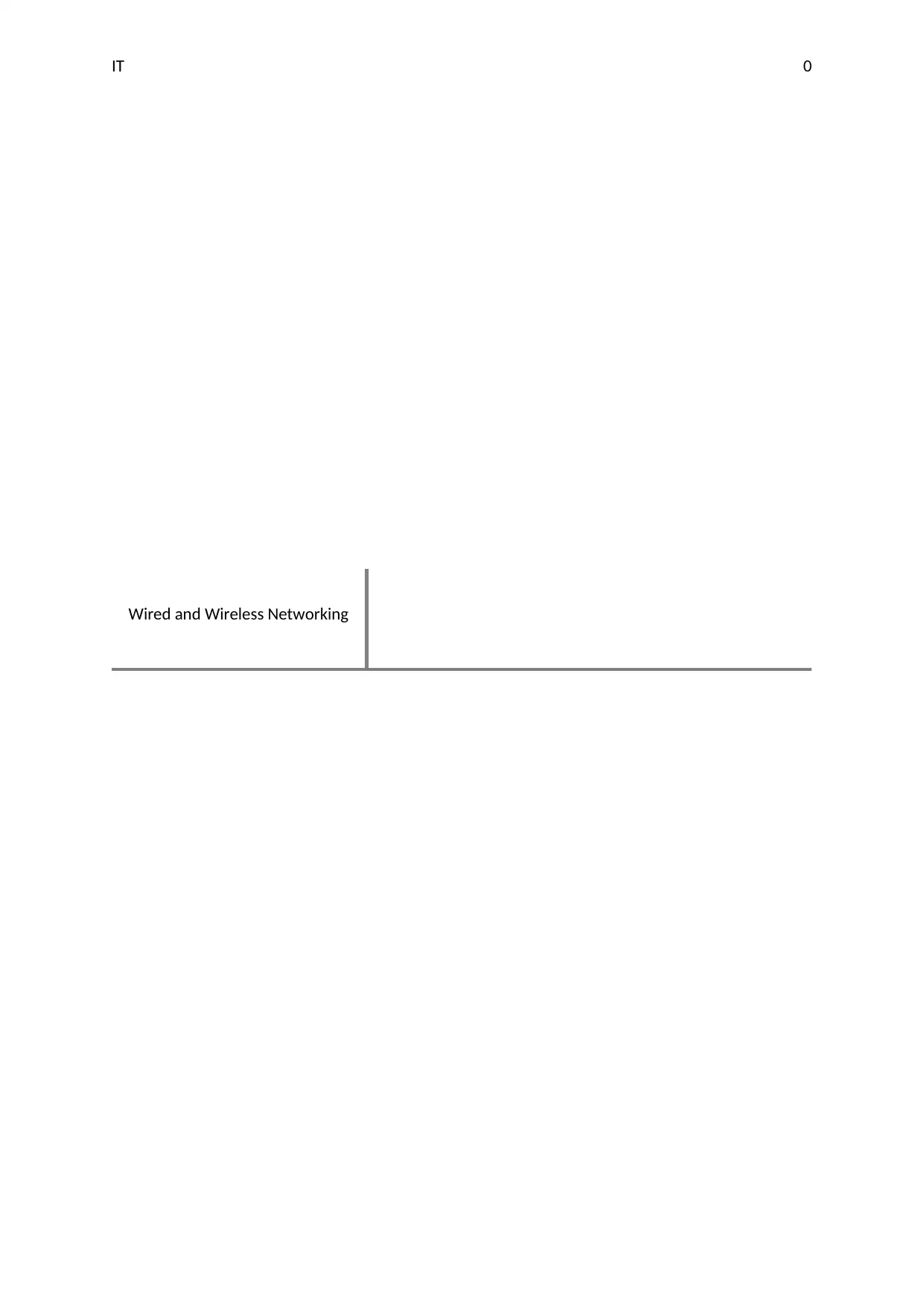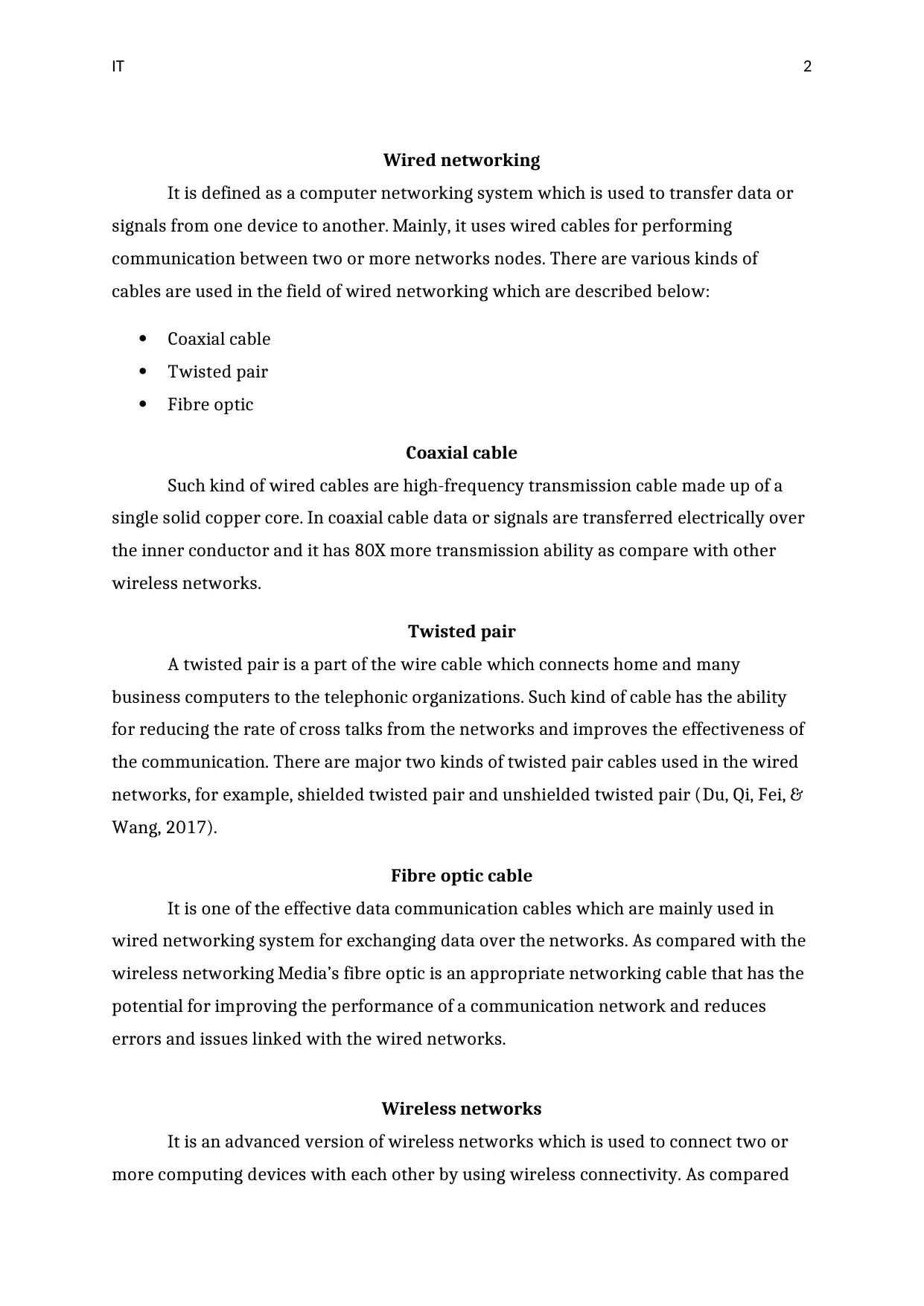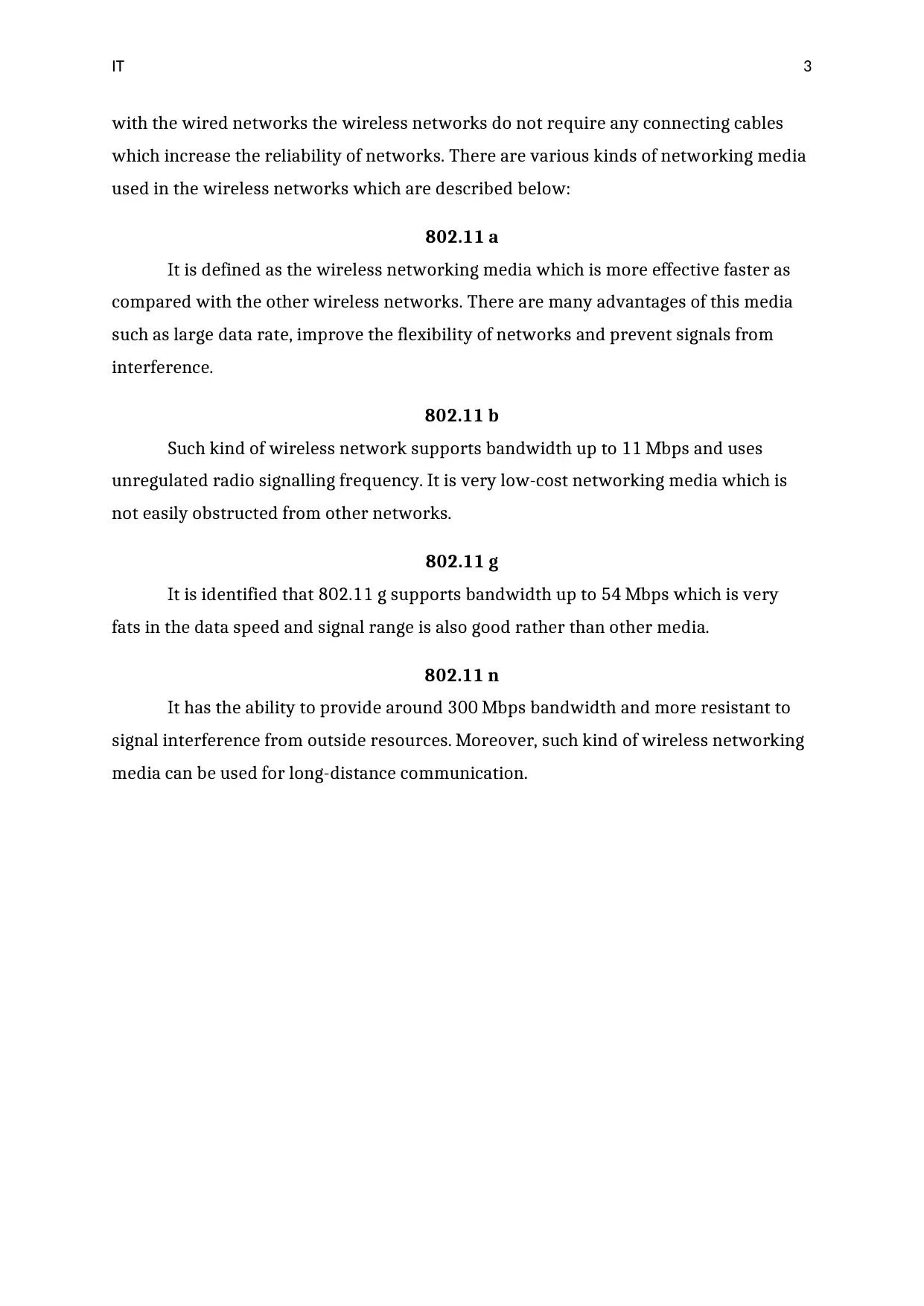Wired and Wireless Networking
VerifiedAdded on 2022/11/17
|6
|675
|175
AI Summary
This document explores the differences between wired and wireless networking, including coaxial cable, twisted pair, fibre optic cable, 802.11 a, 802.11 b, 802.11 g, and 802.11 n. It also provides a comparison between wired media and wireless media. The document is useful for IT students and professionals.
Contribute Materials
Your contribution can guide someone’s learning journey. Share your
documents today.
1 out of 6











![[object Object]](/_next/static/media/star-bottom.7253800d.svg)